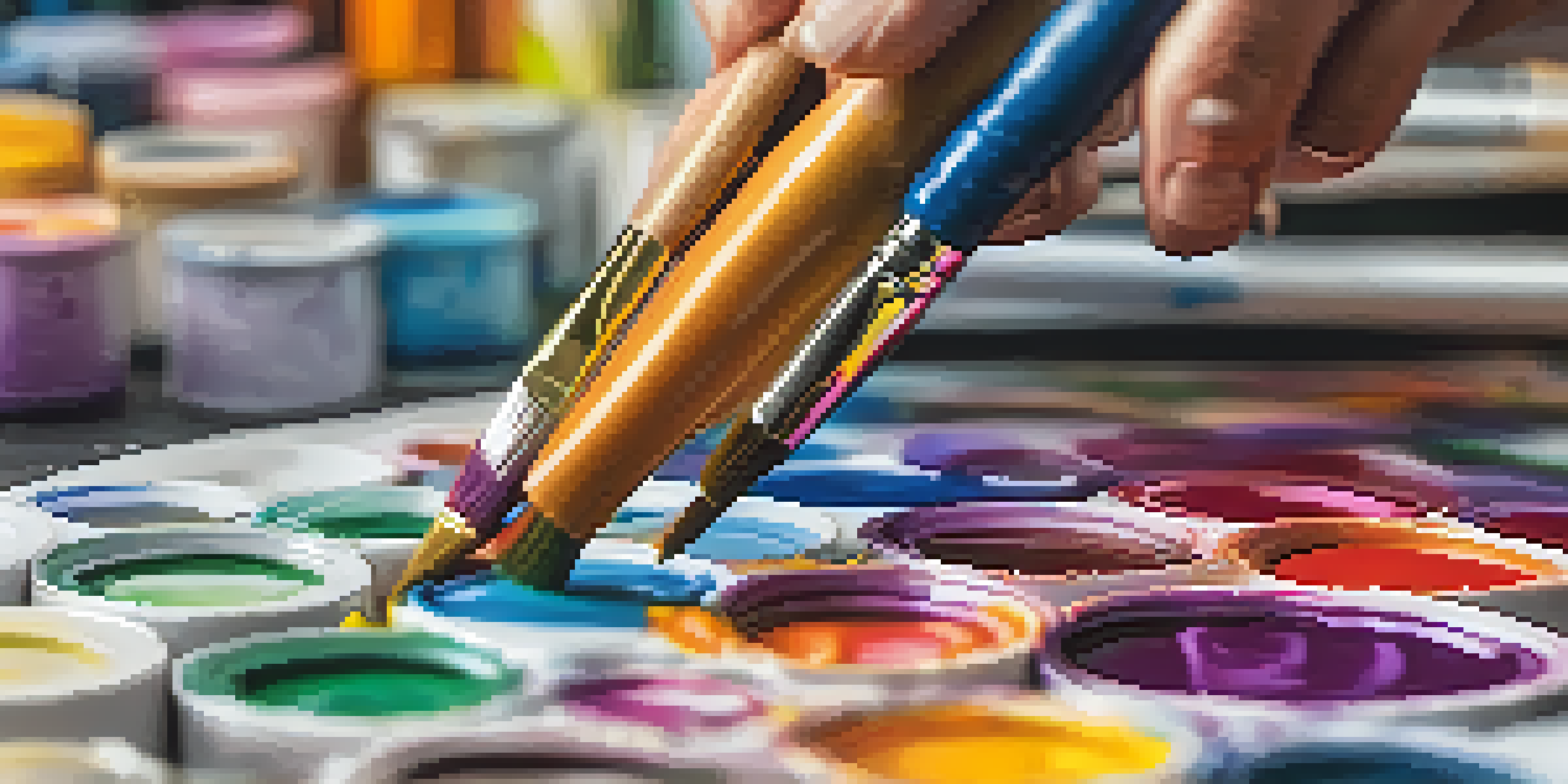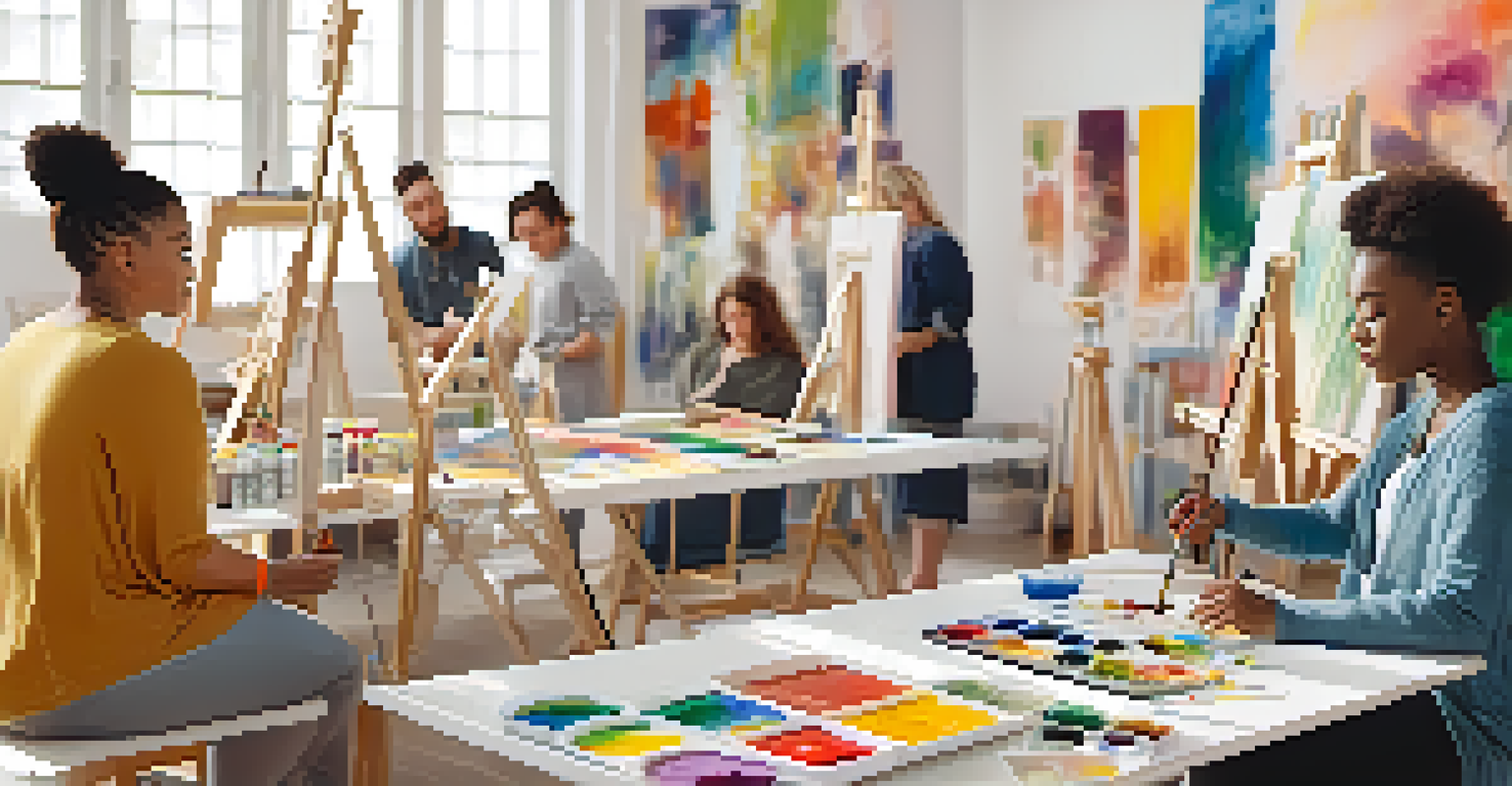Exploring Art Therapy: Painting and Its Impact on Disabilities

What is Art Therapy and Its Benefits?
Art therapy is a therapeutic practice that uses creative processes to help individuals express themselves. Through mediums like painting, it allows people to explore emotions that might be difficult to articulate verbally. This form of therapy can be particularly beneficial for those with disabilities, providing them with a safe outlet for expression.
Art is a way of recognizing oneself and one's surroundings.
One of the primary benefits of art therapy is its ability to reduce stress and anxiety. Engaging in creative activities often leads to a state of flow, where individuals can forget their worries and immerse themselves in the moment. This can be especially crucial for individuals facing the challenges of living with disabilities.
Additionally, art therapy can enhance self-esteem and promote a sense of accomplishment. Completing a painting or any art project can empower individuals, making them feel proud of their creative abilities. This boost in confidence can also translate to other areas of their lives, improving overall well-being.
The Therapeutic Process of Painting
Painting as a therapeutic medium offers a unique process that encourages self-discovery. When individuals pick up a brush, they embark on a journey where their feelings can flow freely onto the canvas. This process can lead to insights about their emotions and experiences, allowing for deeper understanding.

Moreover, the act of painting itself can be cathartic. The physical motions involved in applying paint can release pent-up emotions, serving as a form of emotional release. For those with disabilities, this can be a crucial way to process feelings related to their experiences.
Art Therapy Enhances Expression
Art therapy provides a creative outlet for individuals, enabling them to express emotions that may be difficult to verbalize.
Finally, art therapy sessions often involve reflection on the artwork created. This reflection can help individuals articulate their feelings and thoughts, leading to greater clarity and healing. By discussing their art, individuals can connect more deeply with their emotions and experiences.
How Painting Benefits Individuals with Disabilities
For individuals with disabilities, painting can serve as a powerful tool for communication. Many may struggle to express their thoughts and feelings through words, but art can bridge that gap, providing a voice to their inner world. This visual language can be particularly impactful for those with cognitive or speech impairments.
Every artist dips his brush in his own soul, and paints his own nature into his pictures.
Additionally, painting encourages fine motor skills development, which can be vital for individuals with physical disabilities. The act of holding a brush, mixing colors, and making strokes can enhance coordination and dexterity. This physical engagement can also boost confidence in their abilities.
Furthermore, painting can foster social connections. Group art therapy sessions can create a sense of community among participants. Sharing art experiences can help break down barriers and build friendships, providing a network of support.
Real-Life Examples of Art Therapy Success
There are numerous inspiring stories of individuals who have thrived through art therapy. For example, a young woman with autism found solace in painting, using her artwork to express emotions she struggled to communicate. Her journey not only improved her self-esteem but also opened doors to new friendships.
Another compelling case involved veterans with PTSD who participated in group painting sessions. Many reported that the act of creating art helped them process their experiences in a non-threatening way. This shared experience fostered camaraderie and healing among the group members.
Painting Boosts Confidence and Skills
Engaging in painting fosters self-esteem and fine motor skills, particularly benefiting individuals with disabilities.
These examples highlight the transformative power of art therapy, particularly painting, in the lives of those facing various challenges. They illustrate how creative expression can lead to personal growth and emotional healing.
The Role of Art Therapists in Guiding Sessions
Art therapists play a crucial role in facilitating art therapy sessions, ensuring that individuals feel comfortable and safe. They provide guidance on techniques and materials, helping participants explore their creativity without fear of judgment. This supportive environment is essential for fostering trust and openness.
Moreover, therapists are trained to recognize the therapeutic potential in the artwork. They can help individuals interpret their creations, leading to insights that promote healing. This guidance can be especially important for those who may be unsure of how to express their feelings.
Ultimately, the relationship between the therapist and the participant is central to the effectiveness of art therapy. A strong rapport allows for deeper exploration of emotions, making the painting experience even more impactful.
Getting Started with Art Therapy: Resources and Tips
If you're interested in exploring art therapy, there are many resources available to help you get started. Local community centers, hospitals, and mental health organizations often offer art therapy programs. Additionally, many certified art therapists can provide one-on-one sessions tailored to individual needs.
For those who prefer a more self-guided approach, starting a painting practice at home can be incredibly rewarding. All you need is some basic supplies like paints, brushes, and canvas. Setting aside time to create can serve as a form of meditation, allowing for personal reflection and relaxation.
Art Therapists Facilitate Healing
Art therapists create a safe environment for participants, guiding them through the therapeutic process to promote emotional healing.
Finally, consider joining local art groups or online communities. Sharing your artwork and experiences can enhance the therapeutic process and provide additional support. The connections made through art can be invaluable for personal growth.
The Future of Art Therapy in Disability Support
As awareness of art therapy grows, so does its potential impact on supporting individuals with disabilities. Research continues to demonstrate the benefits of creative expression, leading to increased acceptance in mainstream therapeutic practices. This shift is paving the way for more inclusive and accessible art therapy programs.
Moreover, advancements in technology are expanding the reach of art therapy. Online platforms and virtual sessions are making it possible for individuals who may not have access to local services to benefit from art therapy. This accessibility can be a game changer for many.

Looking ahead, the integration of art therapy into holistic approaches to disability support is promising. By combining traditional therapeutic methods with creative expression, we can create a more well-rounded support system for individuals with disabilities, enhancing their quality of life.